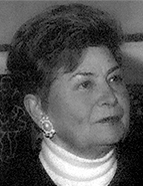

This perspective was clearly expressed in the ambitious museum programme she drew up, in which she distinguished between National Museums, Regional Museums and City Museums, the latter being specific to an urban agglomeration and therefore richer in historical implications. (“Fundamentos dum Museu de Lisboa” [Foundations of a Lisbon Museum]. Revista Municipal, nos. 130 - 131, 1971, p. 19). She put this into practice with a long exhibition on the history of the city of Lisbon from prehistory to the end of the Middle Ages, continued in a second part, which takes us to the end of the 18th century (published in the same journal, nos. 132-133 – 1st and 2nd quarters of 1972). These texts are fundamental to understanding the museum’s programming: the museum displays a selection of exhibits showcasing the city’s history from its prehistoric and protohistoric origins to the establishment of the Republic in 1910. It was opened to the public in successive phases between 1979 and 1984, but his plans for the museum were never fully realised.
It envisaged the expansion of the Palace, which had free space beyond the woods, allowing for the construction of pavilions for complementary collections with a new building, “to be built to the south of the enclosure (...) intended for the installation of reserves” and various services; “the assembly, in the Palace Park, of the archaeological remains of the Royal Hospital of Todos-os-Santos”; “the construction of several pavilions for complementary sections of the Museum, such as the exhibition of Lisbon’s tile collections, contemporary painting and sculpture with an Olisiponense theme”. and other sections. Of this ambitious project, “only the pavilion for tiles was ever built (now called the “Black Pavilion”), without ever being used for its intended purpose”. However, it left its name linked to this artistic expression so genuine to the city, collaborating in the exhibition Azulejos de Lisboa (Tiles of Lisbon), held at the Estufa Fria (Parque Eduardo VII) in 1984. (José Meco, Irisalva Moita. Curriculum Vitae, 2009, pp. 7-25).
This work is financed by national funds through FCT - Foundation for Science and Technology, I.P, in the scope of the projects UIDB/04311/2020 and UIDP/04311/2020.
